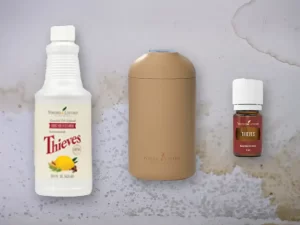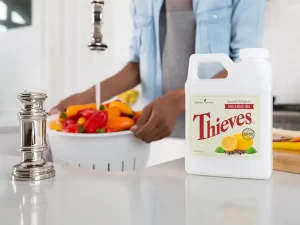The first time I ever ate Sauerkraut was in Vienna, Austria. I don’t think it was exactly the same as the fermented one I make now but it sure tasted great. That was the start of my love affair with sauerkraut. My eldest daughter loves it too. I started putting the jar on the table at dinner times and that way my girls can help themselves. So, let me share my sauerkraut recipe with you!
What is Sauerkraut?
Sauerkraut means ‘sour cabbage’. It’s fermented cabbage. Experts believe people have been fermenting foods since around the 4th Century BC. People fermented foods so they could store them longer in the absence of refrigerators.
Fermentation occurs when microorganisms (yeast and bacteria) on the cabbage eat the natural sugars of the cabbage and convert them into carbon dioxide and organic acids. The micro-organisms are what we call probiotics which you may have heard are in yoghurt and kefir. Probiotics help our gut to digest our food and are one of the main health benefits of eating sauerkraut. Sauerkraut is also rich in beneficial digestive enzymes, vitamin C, Vitamin K2, iron and fibre.
How much Sauerkraut do you eat?
Anywhere between a tablespoon to half a cup is a good amount for us to eat. We try to mix it up though with other fermented foods and drinks such as kombucha, kefir and beet kvass to get a good range of probiotics.
Sauerkraut is a health food and as such you want to make sure you source the best ingredients to make it. It is worth going to the trouble to source organic vegetables as you don’t want foods that have been sprayed with pesticides going in to your jar of goodness.
I make my sauerkraut in a 2 litre glass jar with a wide opening at the top. That way I can sit a smaller jar inside it to squash the cabbage below the liquid. I weigh the smaller jar down with a heavy book.
Basic Sauerkraut Recipe
Ingredients:
- A big organic cabbage (can be white or red or for a cool looking sauerkraut you could mix the two)
- 2kgs of other organic vegetables such as carrot, celery, fennel, beetroot and leeks. These bring their own flavours to the sauerkraut, so you could try using them all at once or choose one or two)
- Flavouring such as fresh garlic, ginger, turmeric, caraway seeds, coriander seeds or cumin seeds.
- Non-Iodised Salt (most recipes use up to 3 Tbs of salt for this much cabbage. However, it is optional particularly if you are on sodium restricted diet)
Method:

- Remove and set aside the outside leaves of the cabbage
- Thinly chop or put all the vegetables through a food processor.
- Add the vegetables and any flavourings to a large mixing bowl.
- This is the bit I love – getting your hands dirty. Well not exactly dirty but you need to get your hands in their and start mixing and squeezing the cabbage and the other vegetables. This is how sauerkraut is made. I use my fist to pound the vegetables and squeeze out the juices between flenched fists.
- If adding salt then do this as you are squeezing, pounding and mixing the vegetables.
- Once mixed then start adding the vegetables a handful at a time to your jar. I pound each handful down to try and get as much juice flowing out of the vegetables as possible. You want the juice to be covering the vegetables so keep pounding until it does. If there really isn’t enough juice then you could use some filtered water at the end to make sure the vegetables are all under the liquid.
- Choose one or two of the outer cabbage leaves that you set aside earlier to cover the top of the vegetables and then put a smaller jar or bowl on top to push the cabbage leaves under the liquid as well.
- Cover the top with cheesecloth, muslin or even a tea towel secured with an elastic band to stop any creepy crawlies from getting in.
- Leave your sauerkraut to ferment in a pantry or cupboard for between 2- 4 weeks. The bigger the cabbage and if you ferment for less time the sweeter your sauerkraut will be. The longer you leave it the more vinegary it will taste.
- If mould appears on the top leaves you can scrape these off, making sure that the vegetables stay under the liquid.
- Once you have fermented the sauerkraut for the desired length of time, simply remove the top cabbage leaves and any discoloured vegetables from the top of the jar.
- Store your sauerkraut in the fridge. Enjoy! Oh, and share this sauerkraut recipe with your friends.
If you’re into fermented foods – and you should be, they’re SO good for you – try my yummy kombucha recipe.










 Subscribe to Hot Oily Mumma
Subscribe to Hot Oily Mumma